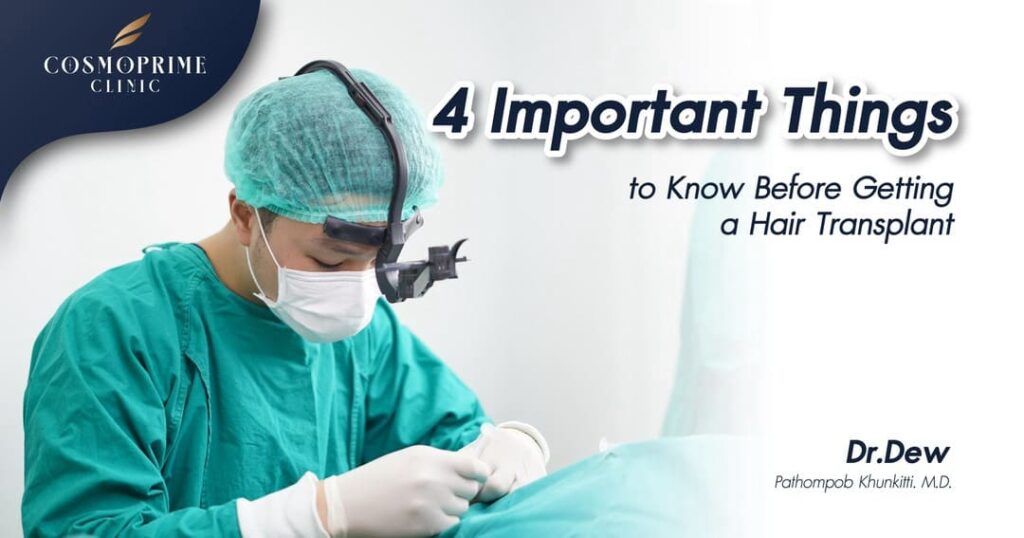4 Things You Should Know Before Getting a Hair Transplant
Hair transplantation is a surgical procedure that requires careful consideration before making a decision. If you’re thinking about addressing hair loss through a hair transplant, it’s essential to understand the process thoroughly. In this article, we’ll walk you through four crucial things you should know before undergoing a hair transplant.

1. Not Everyone Is a Suitable Candidate for a Hair Transplant
A common misconception is that anyone experiencing hair loss can undergo a hair transplant—but that’s not always the case. Before proceeding, you need to consult a qualified specialist who will assess whether you’re an ideal candidate.
The procedure involves extracting hair follicles from donor areas—usually the back of the scalp or the sides—and transplanting them to thinning or bald areas. Your doctor will evaluate whether you have enough healthy hair in these donor areas to perform the procedure successfully.
Certain medical conditions or medications can affect the success of a hair transplant. For example, autoimmune diseases or blood-thinning medications may prevent proper graft attachment or increase surgical risks. Therefore, a thorough medical evaluation is essential before moving forward.

2. There Are Different Types of Hair Transplant Techniques
Once you decide to undergo a hair transplant, it’s important to understand that there are multiple methods available. Each technique is suitable for different types of hair loss and offers unique advantages:
-
FUT (Follicular Unit Transplantation): This method involves removing a strip of scalp from the donor area and extracting hair follicles for transplantation. It allows for a higher volume of grafts but leaves a linear scar.
-
FUE (Follicular Unit Extraction): This method extracts individual hair follicles directly from the scalp without requiring a strip of skin. It results in minimal scarring and faster recovery but may take longer to perform.
-
DHI (Direct Hair Implantation): This advanced method uses a specialized tool to implant hair follicles directly into the scalp, offering precision and reducing handling of the grafts.
The best technique for you depends on factors like the severity of hair loss, scalp condition, and personal preferences. A consultation with your doctor will help you choose the most suitable approach.
3. Post-Transplant Medication May Be Necessary
A hair transplant can restore lost hair, but it doesn’t stop the underlying causes of hair loss. If your hair loss is due to genetic factors (male or female pattern baldness), there is still a risk that untreated hair follicles will continue to shed over time.
To maintain long-term results, your doctor may recommend medications like:
- Finasteride: Helps slow hair loss by blocking DHT, a hormone linked to male pattern baldness.
- Minoxidil: A topical treatment that stimulates hair growth and thickens existing hair.
Consistent use of these medications can help preserve your results and prevent further hair thinning.
4. Hair Transplants Can Be Expensive
Cost is a major consideration when deciding on a hair transplant. Compared to other hair restoration methods, hair transplants can be significantly more expensive.
The cost varies depending on factors such as:
- The number of grafts required
- The technique used (FUT, FUE, or DHI)
- The clinic’s reputation and the surgeon’s experience
- Follow-up care and post-surgical treatments
Hair transplant costs typically range from tens of thousands to hundreds of thousands of baht. Given the investment involved, it’s crucial to choose a reputable clinic with certified specialists, a clean environment, and a proven track record of successful procedures.



